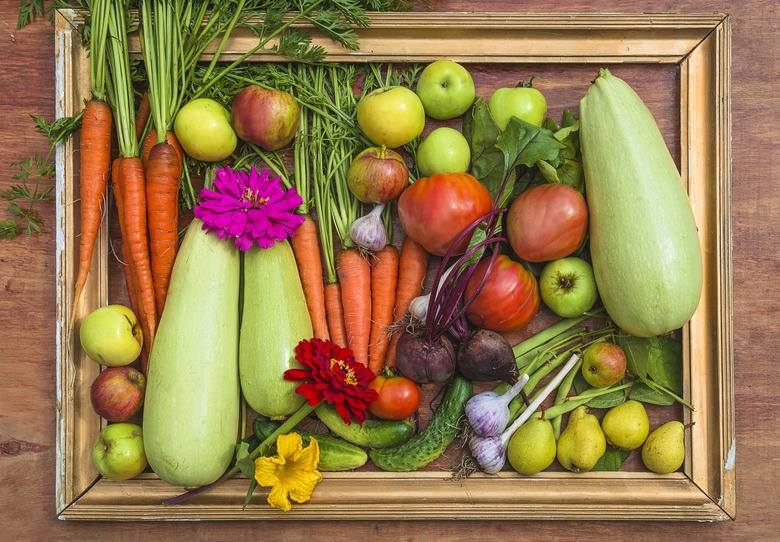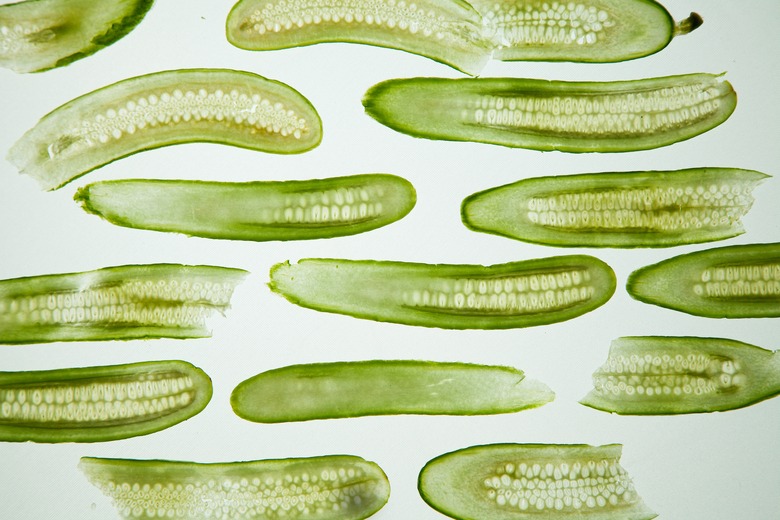What Vegetables Have Seeds?
Many vegetable and fruit seeds are just as edible as the fleshy parts, while other seeds are too large, too tough or unpalatable for consumption and must be discarded. **But whether vegetables actually have seeds, or if this botanical characteristic is reserved only for fruits, is a matter of perspective.**
A botanist will characterize tomatoes as fruits, but consumers and many growers will characterize this garden and table staple as a vegetable. To a botanist, tomatoes are not vegetables with seeds but fruits with seeds. Ask other industry professionals and average consumers, however, and tomatoes are clearly vegetables.
Different Perspectives Determine Vegetables Vs. Fruits
It's largely a matter of perspective when defining whether an edible plant part is a vegetable or a fruit. The botanist views tomatoes, cucumbers, peppers and other salad staples as fruits, because these edible plant parts, which are scientifically classified as ovaries, contain seeds. So, from the perspective of science, a plant part that contains seeds is a fruit.
From the perspective of a grower, vegetables typically are grown and harvested as annual crops (tomatoes, cucumbers, peppers) while fruits typically are grown and harvested from perennial shrubs and trees (apples, oranges, blueberries). However, all six of these plant parts contain seeds and "technically" are fruits.
Another perspective is that of a restaurant chef or home cook who may prepare "vegetables" as side dishes to other entrées and "fruits" as standalone snacks or desserts, even though any vegetables that contain seeds are botanical fruits.
What Are Vegetables?
If all the aforementioned plants botanically are classified as fruits, then what are vegetables? Vegetables are edible plant parts that don't contain seeds; for example, leaves, stems, roots, tubers and bulbs. Using this scientific definition, no vegetables have seeds.
Lettuce is the leafy part of a plant; celery "stalks" are the stems of a plant; carrots are roots; potatoes are tubers; and onions are bulbs. None of these plant parts contain seeds, which classifies them as vegetables from a botanical perspective.
What Are Fruits?
Although we've loosely defined fruits as plant ovaries that contain seeds, what about seedless fruits such as seedless cucumbers, seedless melons and seedless citrus fruits? It's important to note that seed-less doesn't mean seed-free, and most seedless fruits contain the occasional seed or two.
But even if there's not a seed to be found in a seedless fruit, the edible fleshy part is still the ovary of the plant. The absence of seeds generally is a result of breeding, and "seedless" fruits are able to mature without their flowers needing to be fertilized, which is what produces seeds in most plants, through a process called "parthenocarpy."
Tip
Vegetables with seeds don't actually exist, and fruits with seeds are also difficult to specifically categorize.
Vegetable and Fruit Seeds
Although "vegetables with seeds" is a non sequitur, the plant that bears a true vegetable does produce seeds. For example, leafy greens such as kale and collards send up flower stems that bear the seeds for these plants. Carrots grow underground, but the above-ground foliage also sends up a tall flower with a cluster of white flowers at the top of the stem from which seeds are produced if the flowers are fertilized.
All fruit seeds don't neatly fall into the same configuration, depending on the plant. For example, a strawberry seemingly has its seeds on the outside of the sweet fruits, but these sweet fleshy fruits aren't really fruits, and the seed-like structures aren't really seeds. The sweet, fleshy part of the strawberry is simply part of the plant where the flower attaches, and the "real" fruits are the tiny, seed-like structures embedded on the outside of the red flesh. Each of these tiny fruits contains a single seed.
Raspberries and blackberries are examples of a cluster of fruits, each called a "drupe," so each of the small, round structures you see on each berry is a fruit/drupe that contains a single seed.

